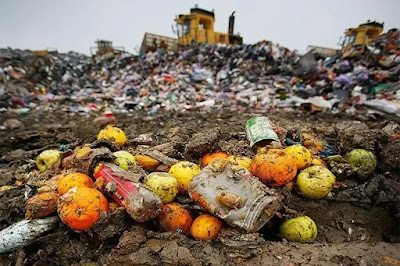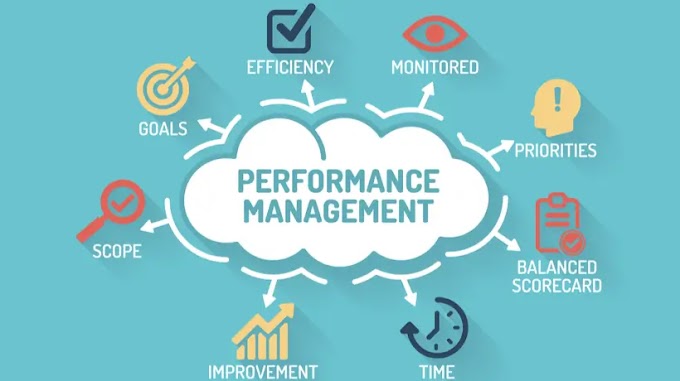Food waste is a significant global problem that has economic, environmental, and social impacts. According to the Food and Agriculture Organization (FAO), about one-third of all food produced worldwide is wasted each year, which is equivalent to 1.3 billion tons of food. This wasted food represents a total economic cost of $940 billion and emits about 3.3 billion tons of greenhouse gases, contributing to climate change.
To tackle food waste, it is essential to understand its causes and consequences and to identify solutions. This article will explore these issues in more detail, providing practical tips and examples of how individuals, businesses, and governments can take action to reduce food waste.
Causes of Food Waste
Food waste can occur at any stage of the food supply chain, from production and processing to consumption and disposal. The following are some of the main causes of food waste:
Overproduction and Excess Consumption
Food is often produced in large quantities to meet demand or to ensure that there is enough supply. However, this can lead to surplus food that is not used and ends up being wasted. Similarly, consumers often buy more food than they need or can consume, resulting in food waste.
To address overproduction and excess consumption, it is essential to:
- Encourage producers to accurately predict demand and adjust production accordingly.
- Encourage consumers to plan their meals, make shopping lists, and buy only what they need.
Lack of Understanding about Expiration Dates and Food Storage
Many people do not know how to properly store and preserve food, which can lead to food spoilage and waste. Additionally, expiration dates can be confusing, with some people throwing out food that is still safe to eat.
To address this issue, it is essential to:
- Educate consumers about food storage and preservation techniques.
- Provide clear and accurate information about expiration dates on food packaging.
- Encourage consumers to use their senses (smell, taste, and sight) to determine if food is still safe to eat.
Marketing Strategies and Aesthetics
Food that does not meet certain aesthetic standards or is not sold quickly enough may be discarded, even if it is still edible. For example, misshapen or bruised fruits and vegetables may be rejected by supermarkets or restaurants, leading to food waste.
To address this issue, it is essential to:
- Encourage retailers and restaurants to accept imperfect or "ugly" produce and use it in their menus or offerings.
- Educate consumers about the value of imperfect produce and how to prepare it.
- Support initiatives that promote the use of imperfect produce, such as "ugly produce" subscription boxes.
Cultural and Social Norms
In some cultures, it is customary to prepare more food than necessary, which can lead to leftovers and waste. Additionally, some people may view throwing out food as a sign of wealth or abundance.
To address this issue, it is essential to:
- Educate consumers about portion sizes and how to prepare meals that use up leftovers.
- Encourage consumers to view food waste as a problem rather than a sign of wealth or abundance.
- Promote cultural and social practices that value food and reduce waste, such as sharing meals and preserving food through canning or pickling.
Supermarkets and Food Supply Chains
Supermarkets may overstock shelves to make the store appear well-stocked, resulting in food waste. Additionally, food may be wasted during transportation or storage due to poor handling or packaging.
To address this issue, it is essential to:
- Encourage supermarkets to adopt more efficient inventory management systems to reduce overstocking.
- Encourage retailers to donate surplus food to food banks or other charitable organizations.
- Improve transportation and storage practices to minimize food waste.
Lack of Food Redistribution Programs
Despite the prevalence of food waste, there is still a lack of food redistribution programs to address the issue. Surplus food from supermarkets, restaurants, and other sources could be used to feed people in need, but logistical and regulatory barriers prevent this from happening.
To address this issue, it is essential to:
- Promote and support food donation and redistribution programs, such as food banks, food rescue organizations, and food recovery networks.
- Work with local and national governments to create policies and regulations that support food donation and redistribution efforts.
- Encourage businesses to donate surplus food and provide incentives for doing so.
Attitudes towards Food Waste
Many people view food waste as a personal issue rather than a systemic one, which can lead to a lack of action to address the problem. Additionally, some people may not realize the economic, environmental, and social impacts of food waste.
To address this issue, it is essential to:
- Educate consumers about the impacts of food waste and how their actions can make a difference.
- Encourage individuals to take action by reducing their own food waste and advocating for change in their communities and governments.
- Promote campaigns and initiatives that raise awareness about food waste, such as #ZeroHunger and Love Food Hate Waste.
Consequences of Food Waste
Food waste has significant consequences for the economy, the environment, and society as a whole. Understanding these consequences is critical in addressing the problem of food waste.
Economic Impact
The economic impact of food waste is significant, both in terms of the resources wasted and the costs incurred. According to the Food and Agriculture Organization (FAO), the economic costs of food waste are estimated to be $2.6 trillion per year worldwide. This includes the cost of food production, transportation, storage, and disposal.
In addition, food waste has a significant impact on businesses in the food industry, including farmers, food processors, and retailers. When food is wasted, businesses lose revenue and profits, which can ultimately lead to higher prices for consumers.
Environmental Impact
Food waste has a significant impact on the environment, contributing to greenhouse gas emissions, water waste, and land use. According to the United Nations Environment Programme (UNEP), food waste is responsible for 8% of global greenhouse gas emissions. This is because food waste that ends up in landfills produces methane, a potent greenhouse gas that is 25 times more effective at trapping heat than carbon dioxide.
In addition, food waste contributes to water waste and pollution. When food is wasted, the water used in its production is also wasted. This can have significant consequences in areas where water resources are scarce. Furthermore, the disposal of food waste can lead to water pollution, as chemicals and other pollutants from decomposing food can seep into groundwater and surface water.
Finally, food waste has a significant impact on land use. When food is wasted, the land used to produce it is also wasted. This can lead to deforestation, soil degradation, and other environmental problems.
Social and Ethical Implications
Food waste also has significant social and ethical implications, particularly in the context of global hunger and food insecurity. According to the FAO, one-third of all food produced for human consumption is lost or wasted. This is equivalent to 1.3 billion tons of food per year.
At the same time, millions of people around the world suffer from hunger and malnutrition. In 2020, an estimated 811 million people worldwide were undernourished, according to the State of Food Security and Nutrition in the World report.
Food waste also has social and ethical implications in terms of equity and access to food. When food is wasted, it means that resources that could have been used to feed people are being wasted. This is particularly problematic in the context of food deserts, where access to healthy and affordable food is limited.
Overall, the consequences of food waste are significant and far-reaching. Addressing food waste is critical to creating a more sustainable and equitable food system for all.
Solutions to Food Waste
Addressing food waste requires a comprehensive and multifaceted approach. The following are some of the solutions that can be implemented to reduce food waste:
Reducing Overproduction and Excess Consumption
Reducing overproduction and excess consumption is a critical step in addressing food waste. This can be achieved through:
- Implementing better inventory management practices in the food industry, including reducing overstocking and improving supply chain efficiency.
- Encouraging consumers to buy only what they need and to use what they buy.
- Educating consumers about portion sizes and the nutritional value of food, to reduce overconsumption.
Improving Education and Awareness about Food Storage and Expiration Dates
Improving education and awareness about food storage and expiration dates is critical to reducing food waste. This can be achieved by:
- Providing consumers with clear and accurate information about food labeling and expiration dates, to reduce confusion.
- Educating consumers about proper food storage techniques, to extend the shelf life of food.
- Providing consumers with recipes and cooking tips that use up leftover ingredients, to reduce food waste.
Promoting Food Donation and Redistribution Programs
Promoting food donation and redistribution programs is an effective way to reduce food waste and support communities in need. This can be achieved by:
- Supporting local food banks and other organizations that distribute surplus food to those in need.
- Encouraging businesses to donate surplus food to these organizations.
- Providing incentives for businesses and individuals who participate in food donation and redistribution programs.
Encouraging Composting and Alternative Uses of Food Waste
Encouraging composting and alternative uses of food waste can help to reduce the environmental impact of food waste. This can be achieved by:
- Promoting composting as a way to recycle food waste and create nutrient-rich soil for gardening and farming.
- Encouraging businesses and individuals to use food waste for animal feed or bioenergy production.
Government Policies and Regulations
Government policies and regulations can play a significant role in addressing food waste. The following are some of the ways that governments can address food waste:
- Implementing policies that promote food donation and redistribution programs.
- Regulating food labeling and expiration date practices to reduce confusion and ensure accuracy.
- Encouraging food waste reduction and recycling through tax incentives and other financial measures.
Some specific examples of government policies and regulations aimed at reducing food waste include:
- The European Union’s Waste Framework Directive, which sets targets for reducing food waste and requires member states to develop national plans for reducing waste.
- The US Food Recovery Hierarchy, which provides a framework for prioritizing food waste reduction and recovery efforts.
- The UK’s Waste and Resources Action Programme (WRAP), which works with businesses and consumers to reduce food waste and promote sustainable resource use.
In conclusion, addressing food waste requires a multifaceted approach that involves individuals, businesses, and governments. By implementing solutions such as reducing overproduction and excess consumption, improving education and awareness about food storage and expiration dates, promoting food donation and redistribution programs, encouraging composting and alternative uses of food waste, and implementing government policies and regulations, we can work together to reduce food waste and create a more sustainable and equitable food system for all.
👉 Read more posts with the same topic
Conclusion
Food waste is a complex and multifaceted problem that requires a comprehensive and collaborative approach to address. By understanding the causes and consequences of food waste, we can work together to implement solutions that reduce waste, support communities in need, and protect the environment. Individuals, businesses, and governments all have a role to play in addressing food waste, and by taking action together, we can create a more sustainable and equitable food system for all.








0 Comments